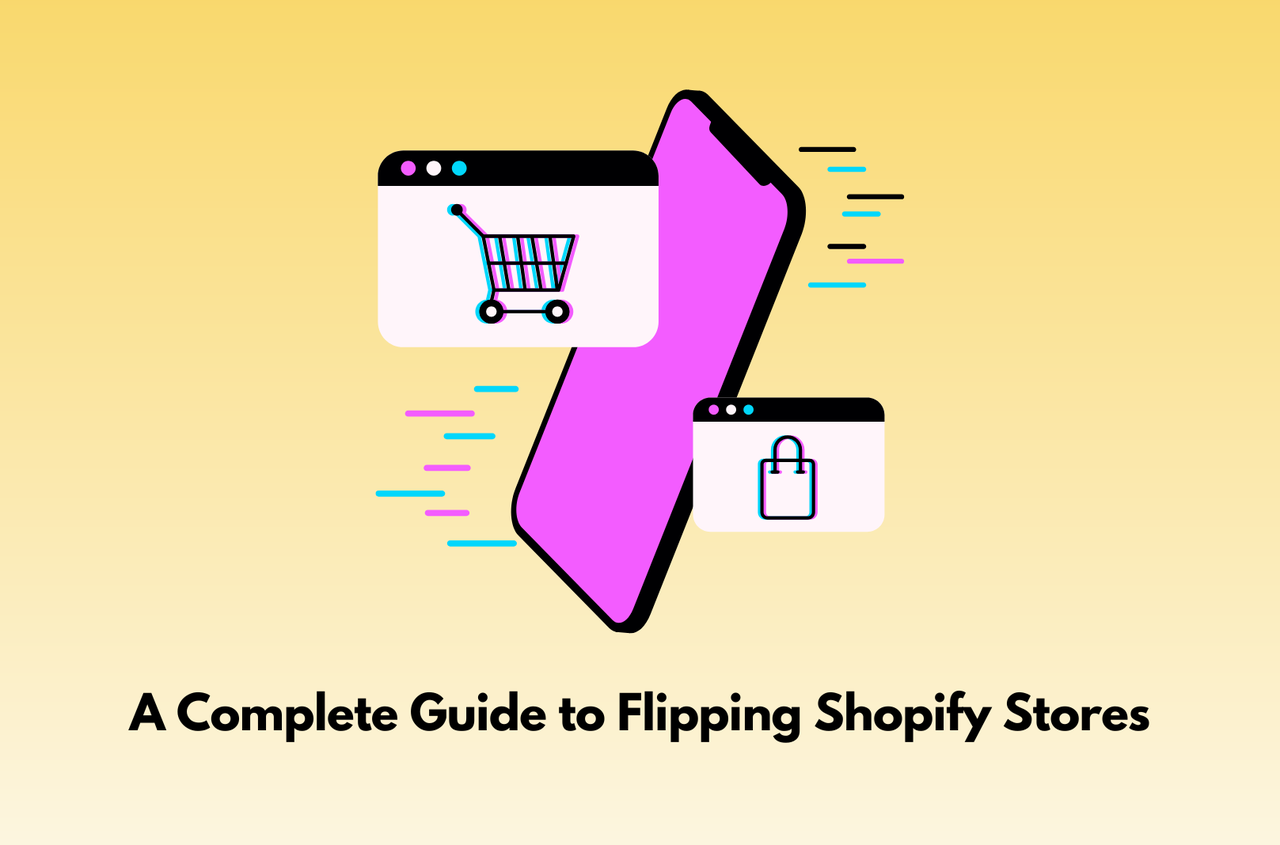The eCommerce landscape has witnessed exponential growth, and Shopify has emerged as a leading platform for aspiring entrepreneurs. With its user-friendly interface and vast customization options, Shopify empowers businesses of all sizes to establish an online presence. In 2025, flipping Shopify stores—the practice of buying, improving, and selling Shopify businesses for profit—has become a lucrative venture. This model offers a unique opportunity for both seasoned entrepreneurs and newcomers to capitalize on the growing demand for pre-established online businesses.
Whether you want to turn a quick profit or build a portfolio of online assets, understanding the dynamics of flipping Shopify stores is essential. This comprehensive guide will take you through every aspect of this venture, from evaluating store value to implementing advanced strategies for success. Let’s dive in!
Table of Contents
What is Flipping Shopify stores?
Flipping Shopify stores refers to the process of purchasing an existing Shopify business, enhancing its performance, and selling it at a higher price. This business model is especially appealing because it allows buyers to skip the often time-consuming initial stages of setting up and growing a store from scratch. Sellers, on the other hand, can profit from their hard work by exiting the business.
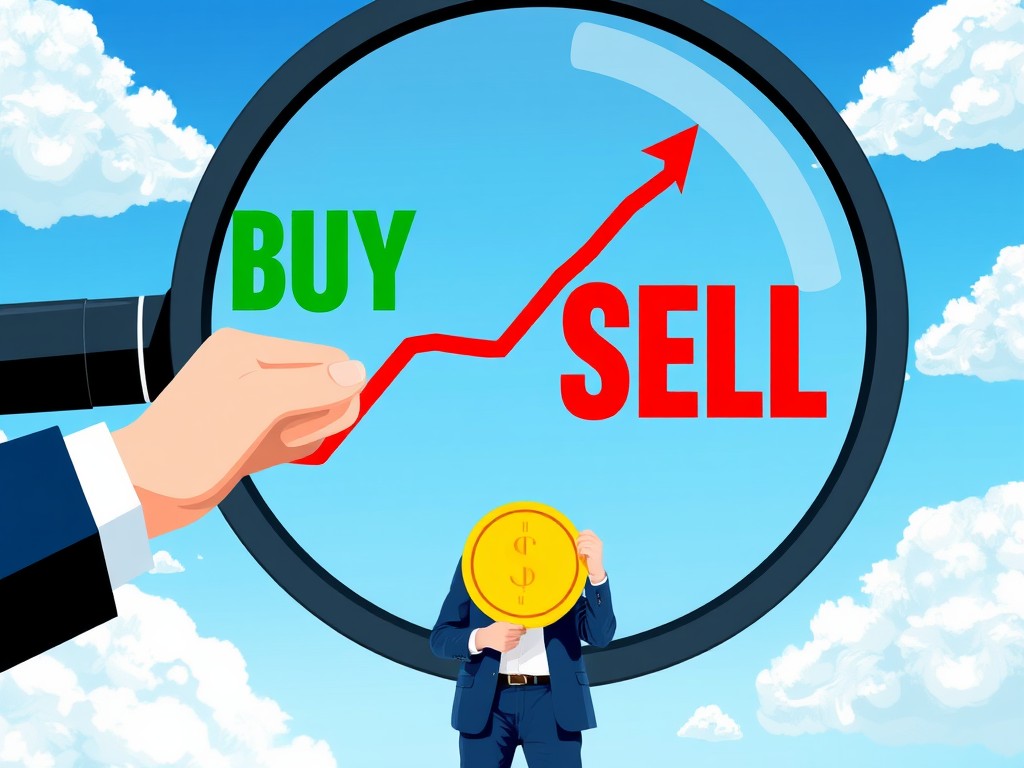
Entrepreneurs engage in Shopify flipping for various reasons. For buyers, it provides a shortcut to owning a profitable online store without the hassle of setup and customer acquisition. For sellers, it’s an opportunity to cash out and invest in other ventures. Success in this domain hinges on identifying undervalued stores with growth potential, implementing effective optimization strategies, and timing the sale strategically.
The potential of Shopify flipping lies in its versatility. Whether you’re targeting a niche audience or a broad market, there’s room to grow and profit with the right approach.
Key Factors to Consider When Flipping a Shopify Store
Evaluating the value of a Shopify store involves analyzing various factors that impact its profitability and growth potential. Here’s a breakdown of the most critical considerations:
Business age, reputation, and social followers
The age of a Shopify store is a key determinant of its value. Older businesses often command higher prices because they have a proven track record and established customer loyalty. Additionally, a strong reputation backed by positive reviews and social proof significantly enhances the perceived value.
Social media metrics, including the number of followers, engagement rates, and audience demographics, also play a role. A robust social media presence indicates an existing community of potential customers and helps build trust among prospective buyers.
Example: A store with a three-year track record, 50,000 Instagram followers, and consistent five-star reviews is likely to attract more buyers than a newer store with limited online presence.
Growth patterns and business models
Shoppers are attracted to stores that demonstrate continued growth in both revenue and sales. Traffic and customer base stores with scalable business models, such as subscription services or dropshipping. is more interesting because they guarantee predictable cash flow and minimal inventory risk.
For example, a subscription-based business model provides a recurring revenue stream that is highly valued in the market. On the other hand, additional effort may be required to sustain the growth of stores that rely only on one-time sales.
Traffic and conversion rates
A diversified traffic portfolio is a strong indicator of a store’s resilience and scalability. Stores that generate traffic from multiple sources—including organic SEO, social media, email marketing, and paid ads—are perceived as less risky.
Conversion rates are equally important. A high conversion rate signals effective marketing, a well-designed website, and a good product-market fit. Tools like Google Analytics can provide insights into traffic patterns, bounce rates, and customer behavior.
Revenue and profit
Revenue is a crucial metric, but profit margins carry more weight in determining a store’s value. Buyers are interested in stores with healthy profit margins and clear accounting records that demonstrate sustainable financial performance.
For example, a store that generates $100,000 in annual revenue. With a profit margin of 40%, it is more attractive than a store generating $200,000 in revenue. But there is a gross profit margin of only 10%.
Operational efficiency
Efficiency in operations adds significant value to a Shopify store. Automated workflows, reliable supplier relationships, and streamlined processes reduce the effort required to manage the business. Buyers prefer stores that are easy to operate and come with documented systems for inventory management, order fulfillment, and customer service.
Case Study: A store that uses apps like Oberlo for dropshipping and Klaviyo for email marketing demonstrates operational efficiency, making it more appealing to potential buyers.
How to Buy, Improve, and Flip Shopify Stores: 6 Steps
Step 1: Research to find the right Shopify store
Finding the right store to flip requires thorough research and due diligence. Start by browsing platforms like Empire Flippers, Flippa, and Acquire.com. Evaluate listings based on the following criteria:
- Traffic Sources and Volume: Analyze where the traffic comes from. Stores with diverse traffic sources, including organic, paid, and social media traffic, are less risky.
- Profit Margins: Focus on stores with healthy and consistent profit margins to ensure sustainability.
- Industry Trends and Market Potential: Choose a store in a growing niche to leverage market momentum.
- Growth Opportunities: Look for stores that have untapped potential in areas like marketing, SEO, or product offerings.
Checklist for Buyers:
- Review financial statements to ensure accuracy and transparency.
- Analyze Google Analytics data for traffic quality and conversion rates.
- Evaluate the store’s social media presence and engagement metrics.
- Identify areas needing improvement, such as website design or marketing strategies.
- Investigate supplier relationships and inventory management systems.
Spending time on due diligence helps mitigate risks and ensures you make a well-informed investment.
Step 2: Acquire a Shopify store
Negotiating the purchase price is an art. Use your research to highlight areas where the store falls short, such as outdated website designs, underperforming ads, or inefficient operations. This can help justify a lower offer while still securing a valuable asset.
Once the deal is finalized, ensure a smooth transition by:
- Securing access to all tools and platforms, including Shopify, marketing accounts, and analytics tools.
- Transferring supplier contracts, customer data, and email lists.
- Documenting standard operating procedures (SOPs) for continuity.
Establishing good communication with the seller is critical to understanding the nuances of the business and ensuring you’re set up for success.
Step 3: Optimize the acquired Shopify store
Optimization is key to increasing a store’s value. Focus on these critical areas:
- Website Design: Invest in a professional and responsive design that aligns with modern UX standards. Mobile-friendliness and fast-loading pages are non-negotiable.
- SEO Improvements: Conduct a full SEO audit and optimize product pages, meta descriptions, and blog content. Improving search rankings drives sustainable organic traffic.
- Product Pages: Enhance product descriptions, use high-quality images, and include customer reviews to boost conversions.
- Checkout Process: Simplify the checkout process, offer multiple payment options, and implement trust signals like secure payment badges to reduce cart abandonment.
Additionally, implement Shopify apps like Hotjar to monitor user behavior and identify friction points. Small, data-driven tweaks can lead to significant improvements in performance.
Step 4: Scale the business
Scaling the business involves amplifying growth opportunities. Here are some strategies:
- Marketing Campaigns: Use a mix of Facebook Ads, Google Ads, and influencer partnerships to drive targeted traffic. Diversify your campaigns to reduce dependence on a single platform.
- Email Marketing: Build segmented email lists and create automated workflows for abandoned cart recovery, upsells, and personalized recommendations.
- Product Expansion: Introduce complementary products or bundles to increase average order value (AOV) and enhance customer lifetime value (CLV).
- Partnerships: Collaborate with other brands or influencers in your niche to tap into new audiences.
Step 5: Prepare for sale
Preparation is critical to maximizing the store’s sale price. Here’s what you need to do:
- Organize Financial Records: Ensure all financial statements are up-to-date and clearly document revenue, expenses, and profit margins.
- Compile Traffic Analytics: Provide a detailed report of traffic sources, conversion rates, and growth trends.
- Document Operations: Create an SOP manual that outlines daily tasks, supplier information, and marketing strategies.
- Highlight Growth Potential: Emphasize areas where the new owner can achieve further growth, such as untapped marketing channels or product categories.
Step 6: Sell the store
When listing your store, choose a reputable marketplace like Empire Flippers, Flippa, or OpenStore. Write a compelling listing that highlights the store’s achievements, operational efficiency, and growth opportunities.
Be proactive in responding to inquiries and provide potential buyers with all the information they need. Negotiate offers with confidence and finalize the sale with a clear agreement that includes a transition plan for the buyer.
Top 5+ Best Marketplaces for Flipping Shopify Stores
Here are the leading marketplaces where you can buy and sell Shopify stores:
Empire Flippers
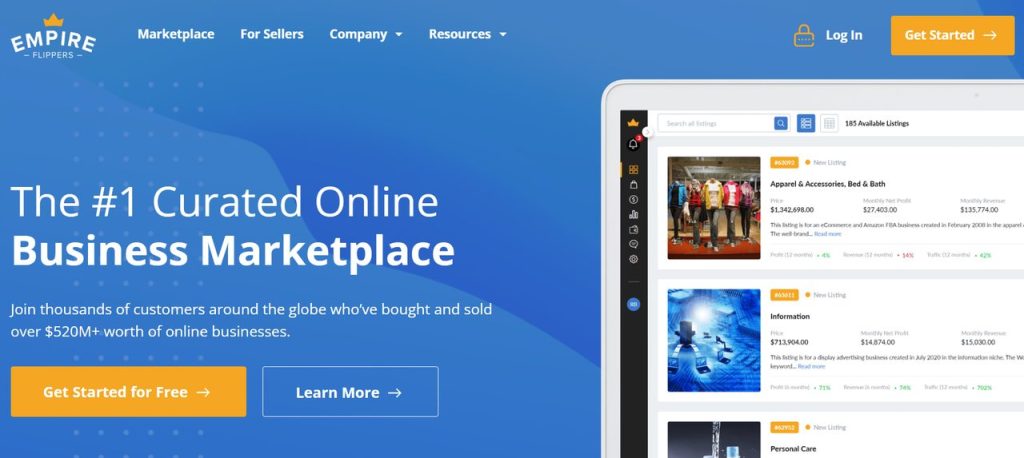
Empire Flippers is one of the most trusted platforms for buying and selling established online businesses. Known for its rigorous vetting process, Empire Flippers ensures transparency and quality in listings. Here you can find dozens of Shopify stores for sale.
Key Features:
- Extensive vetting process for accurate business valuation.
- Premium listings featuring high-value stores.
- Comprehensive buyer and seller support.
Pricing: A 15% commission fee on the final sale price.
Flippa
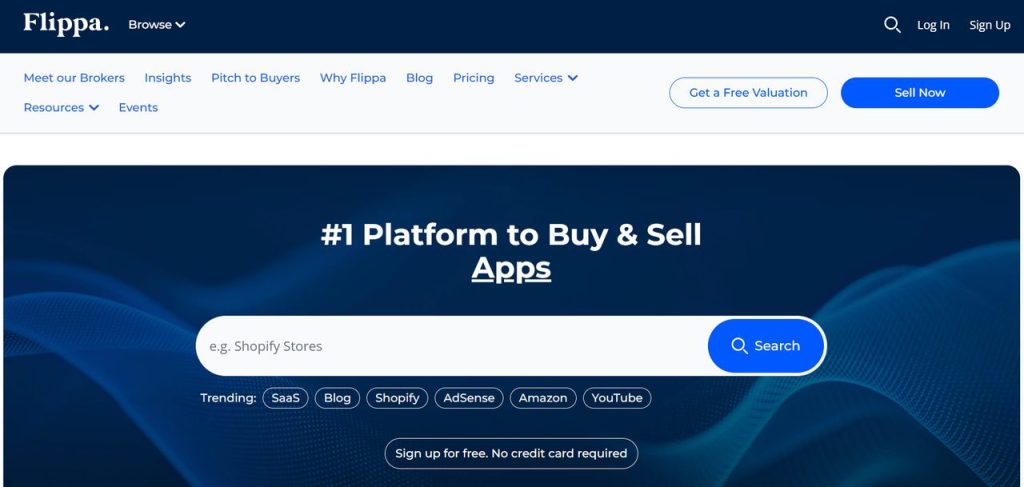
Flippa is a versatile marketplace catering to a wide range of businesses, including small startups and well-established stores. Its user-friendly interface is perfect for beginners.
Key Features:
- Diverse listings across various niches.
- Easy-to-use auction-style sales process.
- Tools for due diligence, such as traffic and revenue analytics.
Pricing: Listing fees start at $29, with success fees ranging from 5% to 15%.
Open Store
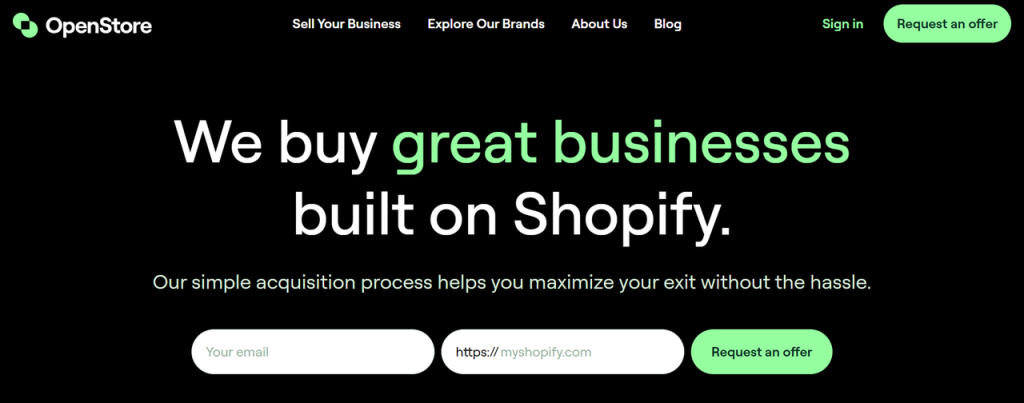
OpenStore specializes in acquiring Shopify businesses quickly. Sellers receive instant offers, making it ideal for those seeking a fast exit.
Key Features:
- Speedy acquisition process with minimal hassle.
- Focused exclusively on Shopify businesses.
- Transparent valuation methods and instant offers.
Pricing: No upfront fees; the commission is included in the final sale.
Acquire.com
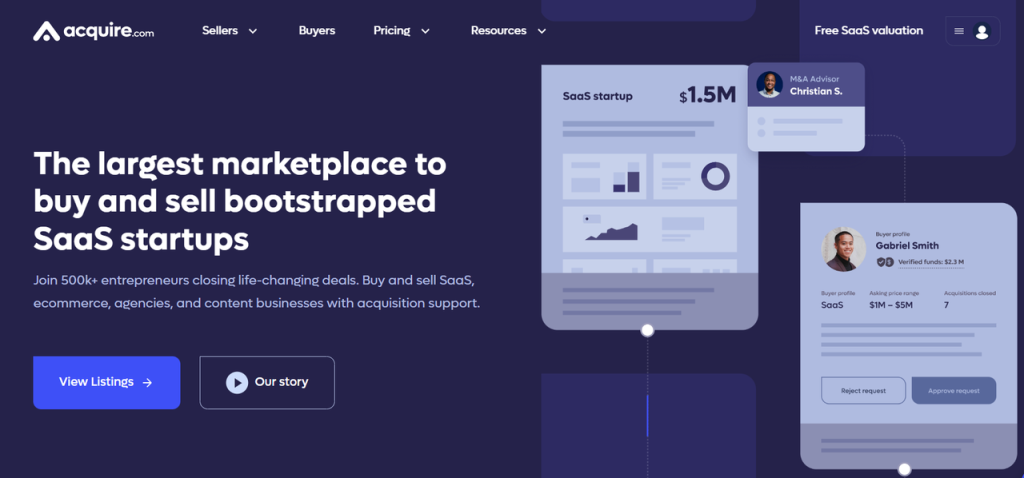
Previously known as MicroAcquire, Acquire.com connects buyers and sellers of small to medium-sized online businesses, offering tools for detailed analytics and secure transactions.
Key Features:
- Verified buyers and sellers for secure dealings.
- In-depth analytics and valuation reports.
- User-friendly interface tailored for online businesses.
Pricing: Plans start at $390 annually, with extra fees for premium listings.
Business Exits
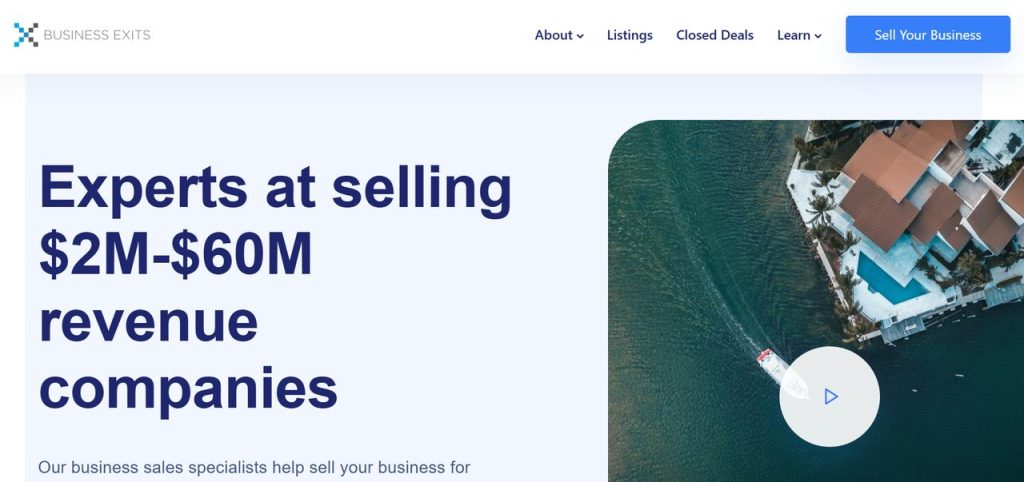
Business Exits provides personalized services for selling online businesses. Their expert team helps streamline the sale process and maximize store value.
Key Features:
- One-on-one support from experienced brokers.
- Confidential listings to protect your business reputation.
- Professional valuation services to determine accurate pricing.
Pricing: Custom pricing based on the value of the sale.
5 Great Strategies for Flipping Shopify Stores
Flipping Shopify stores successfully requires strategic planning, optimization, and the use of reliable tools and methods. Here are actionable tips to ensure success:
Boost Store Value
Building a high-value Shopify store involves branding. Excellent customer service and product differentiation Unique brand identity Includes professional logo corresponding color tone and interesting stories Help your store stand out Differentiate your product by highlighting features and benefits that competitors may overlook. Guaranteed excellent customer service with fast response times. clear communication and guarantee customer satisfaction Positive reviews and customer testimonials will greatly increase the perceived value of your store. This makes it more attractive to potential buyers.
Optimize timing
Timing is critical when selling your Shopify store. The ideal time to sell is during a peak sales season, such as Black Friday or the holiday season, or after a period of steady growth. Selling at the right time demonstrates to buyers that the store has momentum and profitability. Conversely, avoid selling during slow periods or economic downturns, as this may lower your store’s valuation. Research market trends to determine when demand for your niche products is highest and plan your sales accordingly.
Leverage Shopify apps and integrations
To maximize the value of your Shopify store before selling It is essential to optimize its functionality and attractiveness. An effective way to achieve this is by using the right Shopify app that increases operations. Improve customer engagement and drive income Here are some highly recommended tools and how they can help:
- Oberlo: Automate dropshipping operations from product sourcing to inventory management. This makes it easier to manage your store and attract more potential buyers.
- Klavio: Use advanced email marketing tools to increase customer retention. Personalized campaigns, such as abandoned cart emails and product recommendations increase revenue.
- Recharge: Add a subscription model to ensure consistent income. Buyers value the predictability of subscriptions. which adds interest to the store
- Shopify Flow: Automate repetitive tasks like updating inventory and tracking orders. to improve efficiency
- Hotjar: To analyze and improve user experience. Use heat maps and customer session recordings to increase conversions.
In addition to these apps, Shopify offers a variety of integrations designed to enhance various aspects. of your business From analytics to customer service to marketing and logistics. Taking advantage of these tools will not only improve your store’s day-to-day operations; But it also increases the perceived value. Well designed store effective And being profitable is more likely to attract serious buyers and keep sales prices up. By using the right tools and strategies carefully. You can turn your Shopify store into a highly sought-after asset ready for successful sales.
Execute marketing strategies
Applying various marketing strategies to maximize sales and traffic Use retargeting ads to recapture visitors who didn’t initially convert. Include social proof such as reviews and user-generated content. Building trust and credibility Influencer marketing campaigns can also increase your store’s reach. You also need to check out various marketing channels and make data-driven decisions focusing on channels with the highest ROI.
Build a positive reputation
Your store’s reputation is a key selling point. Foster transparency with clear policies, including return and refund options. Engage actively with your customers through social media and other platforms, responding promptly to queries and concerns. Collect and showcase testimonials, ratings, and case studies. A positive reputation not only attracts buyers but also allows you to command a higher sale price.
In Conclusion,
Transforming Shopify stores is an exciting and lucrative opportunity for entrepreneurs in 2025, whether you’re buying a store to grow your business or selling it for a profit. By understanding what drives store costs Increase operational efficiency and leverage proven tools and strategies. You will be able to maximize your returns. Platforms like Empire Flippers and Flippa give you the tools and support you need to succeed. With dedication and the right approach, flipping your Shopify store could be your path to financial growth and entrepreneurial success. Get started today and turn your eCommerce opportunities into tangible results!

